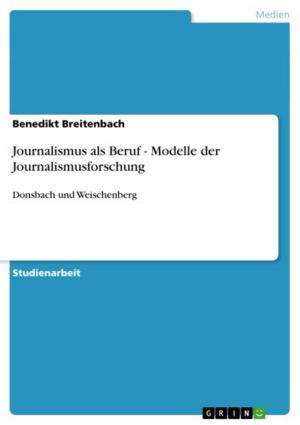Imagery and technique in John Updike's 'Rabbit, Run' (1960)
Nonfiction, Entertainment, Drama, Anthologies| Author: | Sirinya Pakditawan | ISBN: | 9783640106660 |
| Publisher: | GRIN Verlag | Publication: | July 18, 2008 |
| Imprint: | GRIN Verlag | Language: | English |
| Author: | Sirinya Pakditawan |
| ISBN: | 9783640106660 |
| Publisher: | GRIN Verlag |
| Publication: | July 18, 2008 |
| Imprint: | GRIN Verlag |
| Language: | English |
Seminar paper from the year 2005 in the subject American Studies - Literature, grade: 1,5 , University of Hamburg, 17 entries in the bibliography, language: English, abstract: Perhaps the most revered Updike novels are his Rabbit tetralogy, comprised of four books that ran from 1959 to 1991, which detail the center of American life, i.e. the middle class. Hence, the protagonist Harry 'Rabbit' Angstrom can be regarded as Updike's most famous character. From his Rabbit series, the first novel Rabbit, Run is without doubt Updike's most recognized book. In Updike's own words, Rabbit is a character that is similar to the author. Hence, Updike once told Michael Rogers in an interview that even though he does not have the same social background and sociological circumstances as his character Rabbit, many of his ideas and thoughts enter Rabbit's head. Thus, one might be justified in claiming that the Rabbit novels are also partly autobiographical. However, since the novel Rabbit Run has been published, some critics have not held it in great esteem. Nevertheless, Detweiler also claims that today the novel can be appreciated more fully for its artistic qualities - and these qualities are, in fact, quite numerous. Hence, there are many critics who appreciate Updike's style and his mastery of language. For example, Rachael C. Burchard calls Updike's art of writing 'superb' and says that '[h]is work is worth reading if for no reason other than to enjoy the piquant phrase, the lyric vision, the fluent rhetoric'. In the following, it will be analyzed which techniques Updike uses in the novel Rabbit, Run. Hence, it will be focused primarily on the narrative technique. In a second step, the structure of the novel will also be analyzed and the central motif of the quest will be dealt with.
Seminar paper from the year 2005 in the subject American Studies - Literature, grade: 1,5 , University of Hamburg, 17 entries in the bibliography, language: English, abstract: Perhaps the most revered Updike novels are his Rabbit tetralogy, comprised of four books that ran from 1959 to 1991, which detail the center of American life, i.e. the middle class. Hence, the protagonist Harry 'Rabbit' Angstrom can be regarded as Updike's most famous character. From his Rabbit series, the first novel Rabbit, Run is without doubt Updike's most recognized book. In Updike's own words, Rabbit is a character that is similar to the author. Hence, Updike once told Michael Rogers in an interview that even though he does not have the same social background and sociological circumstances as his character Rabbit, many of his ideas and thoughts enter Rabbit's head. Thus, one might be justified in claiming that the Rabbit novels are also partly autobiographical. However, since the novel Rabbit Run has been published, some critics have not held it in great esteem. Nevertheless, Detweiler also claims that today the novel can be appreciated more fully for its artistic qualities - and these qualities are, in fact, quite numerous. Hence, there are many critics who appreciate Updike's style and his mastery of language. For example, Rachael C. Burchard calls Updike's art of writing 'superb' and says that '[h]is work is worth reading if for no reason other than to enjoy the piquant phrase, the lyric vision, the fluent rhetoric'. In the following, it will be analyzed which techniques Updike uses in the novel Rabbit, Run. Hence, it will be focused primarily on the narrative technique. In a second step, the structure of the novel will also be analyzed and the central motif of the quest will be dealt with.















